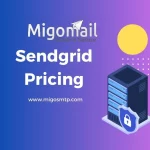Nowadays, Marketing automation is becoming an essential tool for every modern Business man marketers. Adding automation software program in your advertising and marketing toolbox. It takes the guesswork out of lead nurturing, personalizes the person experience, and centralizes sales and marketing. In this Article, You will see 5 Steps for Selecting a Marketing Automation Tool. Advertising and marketing automation is a virtual extension of your crew, acting duties that after needed to be executed manually with greater ease and accuracy.
To obtain these types of blessings, you need to discover a platform. That your group participants can embrace and works well within your business enterprise’s technique. The top criteria of an advertising and marketing automation gadget for B2B advertising and marketing managers are rate, product integration, and ease of use.
We’ll discover why these elements, amongst others, must influence your preference and in which alongside the choice making procedure they arrive into play. Therefore, Comply with those ten steps and also you’ll have the smarts. You’ll want to pick the proper marketing automation platform for your B2B business.
Steps for Selecting a Marketing Automation Tool
1. Make a Decision
For Taking Decision-related Marketing Automation Tool. It’s time to pick the marketing automation platform that will help your marketing business and sales team to excels your capturing leads and nurturing. Also, For Them with personalized marketing, and calculating the results of your efforts. Everything you need to know is learned from your business, demos, and questions should influence your final decision. Similarly, Choose the platform that excels your business checks all the boxes, meets the budget and works well within your organization.
2. Understand Your Marketing Automation
Mailcot defines marketing automation as “using software and web–based offerings to execute, manipulate, and automate advertising responsibilities and tactics. Similarly, It replaces guide and repetitive advertising methods with motive–built software and programs geared closer to overall performance.” This software operates via a relevant platform to convey your advertising and marketing practices, from email to social. Advertising and marketing automation lends a digital hand to investigate your contacts, phase your leads. Therefore, It then grants the outcomes and ROI information in simple and customizable reviews.
3. Integration Opportunities
Perhaps your corporation is already working with some tremendous automation equipment. If this example, it’s important to recognize whether they’ll integrate with a brand new device and, in that case, how they’ll combine. Similarly, You don’t want any unpleasant surprises down the road.
First, ensure the automation system you select has utility application interface (API) integrations for the systems you’re currently the use of. Also, All the precious equipment you have in the vicinity now whether they’d a webinar, social media, or customer dating management (CRM) equipment. However, And don’t simply focus on your marketing team’s structures. Also, check in with sales and different departments as properly to peer if a new automation platform might integrate with their gear.
4. Available Budget
Earlier than you begin evaluating automation alternatives, first check your budget. How a good deal are you able to realistically find the money for to spend on advertising automation? Take into account that the larger your contact database, the more automation vendors will price you. Make the effort to do a little study on your top automation picks and spot what everyone offers. Similarly, The Particular services and to be had equipment will vary from platform to platform. Therefore, Understand that many main providers offer numerous distinct pricing tiers, which can be especially useful for smaller agencies.
5. Ease of Use
A marketing automation platform shouldn’t be difficult or overly time-consuming to figure out. That would kind of defeat the reason for automation, wouldn’t it? If feasible, ask the marketing automation business enterprise for a 30-day trial. Therefore, This could let you test usability and functionality and get a sense for what it might be like operating with the device on an everyday foundation. That is additionally useful for test–riding the employer’s customer service. More particularly, see what their phone– or on-line–assist hours are like and whether or not they align along with your own business hours.








 Email Marketing
Email Marketing


